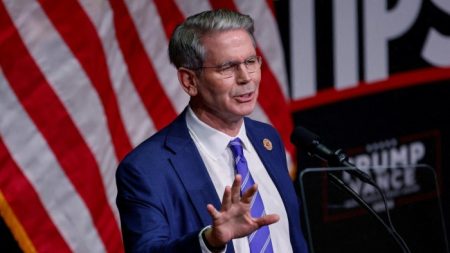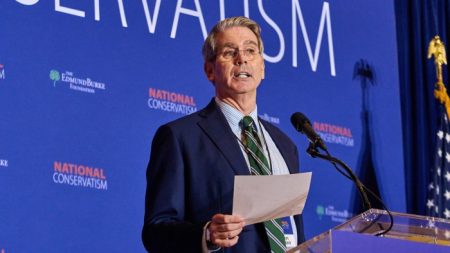Unlock the US Election Countdown newsletter for free
The stories that matter on money and politics in the race for the White House
The US remains off track for the steep greenhouse gas emissions cuts promised by 2030 under the Paris accord despite the Biden administration’s sweeping green subsidies and new climate rules, the latest analysis shows.
The US, historically the world’s biggest polluter, has significantly reduced emissions under President Joe Biden but it will still fall short of the pledge to eliminate at least 50 per cent by the end of the decade, compared with 2005 levels, according to independent research from Rhodium Group.
The US was likely to achieve emissions cuts of between 32 per cent and 43 per cent below 2005 levels by 2030, and then accelerate to reach in the range of a 38-to-55 per cent cut by 2035, Rhodium found. A previous report found the Biden measures would help put the cuts in the range of 37 per cent to 42 per cent by 2030.
It calculated that there was a record $71bn worth of clean energy investment in the US in the first three months of 2024 — a 40 per cent increase compared with the same quarter of 2023.
The US government’s clean energy boost provided a “step change”, said Ben King, associate director of Rhodium’s energy and climate practice. “But . . . it doesn’t get us to 50 per cent in 2030, it’s not putting us on a long-term trajectory to decarbonisation.”
The conclusions take into account the series of signature legislative and rulemaking achievements by the administration, underscoring the difficulty of slashing emissions quickly enough to limit global warming to no more than 1.5C ideally, as set down under the 2015 Paris Agreement. The global average temperature rise is already at least 1.1C since pre-industrial times.
If Donald Trump wins the presidential election in November, he is expected to abandon the UN climate change accord, which he withdrew from during his presidency in 2017, and reverse any progress.
The Rhodium forecast includes projections for the effects of $369bn of clean energy subsidies, included in the landmark Inflation Reduction Act, as well as a series of recent rules from the US’s top environmental regulator designed to curtail emissions from power plants and car exhausts.
The range of estimates for emissions cuts was produced by creating three scenarios starting with different assumptions about the cost of clean energy and fossil fuels, the pace of clean energy deployment and US economic growth.
Sharp declines in emissions were forecast between 2023 and 2035, including from the power sector, of up to 83 per cent below 2023 levels by 2035, based on the rise of wind and solar and the plummeting use of coal.
New regulations produced by the US’s environmental watchdog, the Environmental Protection Agency, would help drive down transport emissions by up to 34 per cent below 2023 levels by 2035, Rhodium concluded.
The EPA regulations aimed at reducing the potent warming methane emissions from oil and gas operations should result in a drop in those emissions of up to 28 per cent from 2023 levels by 2035.
However, rising demand of electricity from data centres, as well as legal challenges to climate regulations from the US Supreme Court, could severely change the course of the projected emissions reductions.
In June, the Supreme Court clipped the wings of federal agencies by overturning a decades-old legal doctrine that gave US agencies latitude to create rules and regulations based on their interpretation of the law.
Read the full article here












